How to Fix Windows Update Error 0x800705B3
Some Windows users are encountering the 0x800705b3 error code after failing to install a pending update on Windows 10. Most commonly this particular issue is reported to occur with Integrated webcam drivers updates and Bluetooth adapter driver updates.
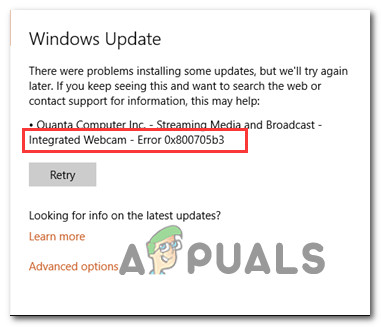
After investigating this particular issue thoroughly, it turns out that there are several different causes that might trigger the apparition of this error. We’ve compiled a shortlist of potential culprit so you know exactly what culprits might be responsible for this error:
- Generic Windows Update inconsistency – If the issue is being caused by a genetic glitch that Microsoft is already aware of, chances are you’ll be able to fix this issue by running the Windows Update troubleshooter and applying the recommended fix.
- Broken Windows Update component – According to some affected users, you can also expect to deal with this issue in instances where the Windows Update component is no longer able to install pending updates. In this case, you might be able to bypass the issue by using the Microsoft Update catalog to install the update manually.
- Windows Installer service is Disabled – Another reason why you might end up seeing this error is an instance in which the Windows Installer service is disabled. In this case, all your pending Windows Updates should all fail with the same 0x800705b3 error code because your OS can’t install them. If you find yourself in this scenario, you should be able to fix the issue by force-enabling the Windows Installer service.
- TCP / IP inconsistency – The installation of pending updates might also fail with this error code due to bad TCP / IP temporary data that is being maintained in between restarts. If this scenario is applicable, you should be able to fix the problem by performing a Winsock reset from an elevated Command Prompt.
- System File Corruption – Under certain circumstances, you might also see this error occurring due to some type of system file corruption that affects Windows Update. In this case, you should attempt to fix the issue by running a couple of built-in utilities capable of fixing system file corruption (SFC and DISM) or performing a repair install or clean install in more serious circumstances.
Now that you know every potential culprit, here’s a list of confirmed methods that other affected users have successfully used to fix the 0x800705b3 error code and complete the installation of the pending update.
Method 1: Running the Windows Update Troubleshooter
The majority of users that were dealing with this issue reported that the issue was fixed after they ran the Windows Update Troubleshooter and applied the recommended fix.
This is a utility the includes a variety of automated fixes that you can apply with a single fix. If the issue causing the 0x800705b3 error is already covered by a repair strategy, you should be required to do much more than gong after the recommended fix.
Follow the instructions below to open and configure the Windows Update Troubleshooter, then apply the fix that’s capable of correcting the issue:
- Open a Run dialog box by pressing Windows key + R. Inside the text box, type ‘ms-settings:troubleshoot’ and press Enter to open up the Troubleshooting menu.
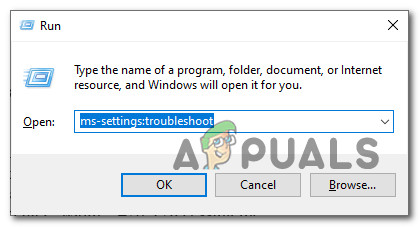
Opening the Troubleshooting tab on Windows 10 - Once you’re inside the Troubleshooting tab, move over to the right-hand section of the screen and click on Windows Update (under Get up and Running). Next, from the context menu that just appeared, click on Run the Troubleshooter.

Running the Windows Update Troubleshooter - Once you’re inside the Windows Update troubleshooter, wait until the initial scan is complete and see if a viable repair strategy is found.
- If the scan has identified a strategy with the potential to fix your ongoing issue, click on Apply this fix and wait until the procedure is complete.

Applying the fix Note: Depending on the type of fix that was recommended, you might need to follow an additional set of instructions before the fix will be properly imposed.
- After you’ve done this, reboot your computer and wait for the next startup to complete.
- Open Windows Update once again and see if the installation of this pending update is now succesfull.
If the same issue is still occurring, move down to the next potential fix below.
Method 2: Installing the pending Update Manually
In case running the troubleshooter didn’t allow you to fix the issue in your case, chances are you’re dealing with some inconsistency affecting the Windows Update component and preventing it from completing the installation of new driver versions.
Whether you’re experiencing this issue with an integrated webcam driver or with anything else, chances are you’ll be able to circumvent the apparition of the 0x800705b3 error by using the Microsoft Update Catalog to find, download and install the pending update manually.
If you haven’t tried this fix already, follow the instructions below to download & install the update that is failing with the 0x800705b3 error via the Microsoft Update Catalog:
- Open your default browser and navigate to the root web page of the Microsoft Update Catalog.
- Once you’re inside the Microsoft Update Catalog, use the search function (top-right corner of the screen) to search for the update that is failing.
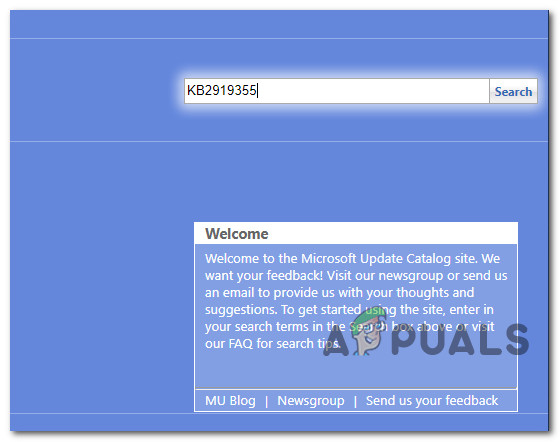
Downloading the Update that is failing with the 0x800705B3 error code - After the search is completed and you get the list of results, look for an update driver version that is compatible with your Windows version and CPU architecture.
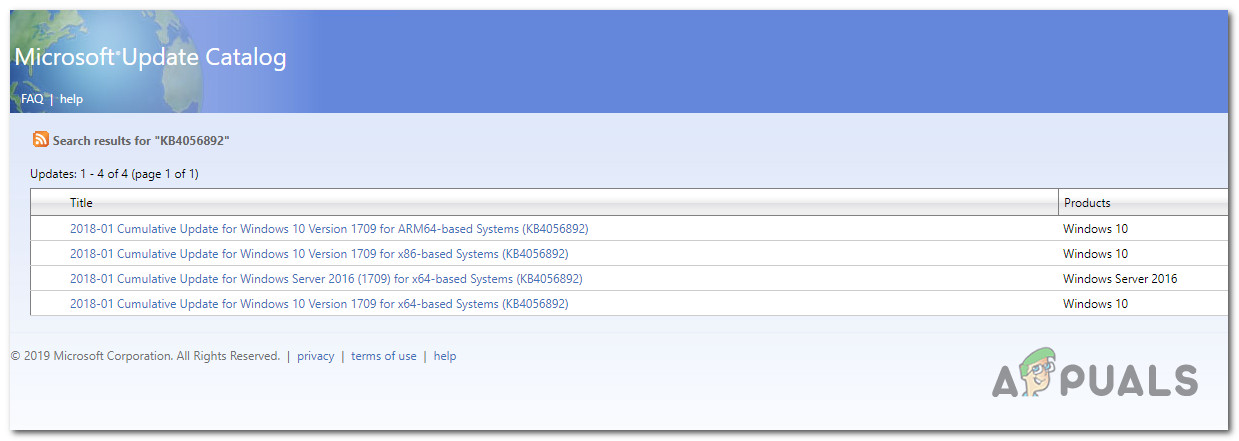
Downloading the correct Windows Update version - Once you manage to identify the correct Windows Update, click on the hyperlink associated with the update that you want to install, then click the Download button and wait for the process to complete.
- After the download is complete, use File Explorer to navigate to the location where you previously downloaded the update.
- When you get to the correct location, right-click on the .inf file and choose Install from the context menu that just appeared.
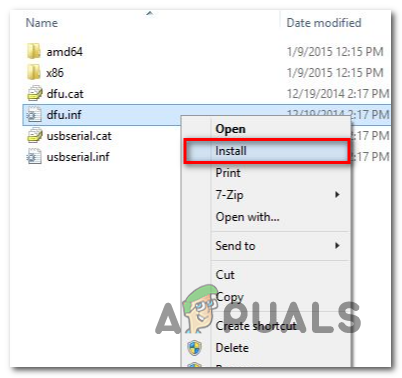
Downloading the Windows Update via it’s INF file Note: If you have multiple failing updates with the same 0x800705b3, repeat the instructions above with every Windows Update that you’re having trouble installing.
- At the end of this operation, reboot your computer and see if the problem is fixed at the next computer startup.
If installing the problematic Windows Update via the Microsoft Update Catalog yields the same error code, move down to the next potential fix below.
Method 3: Enabling the Windows Installer Service
In case every pending Windows Update that you try to install ends up failing with the same error code, take the time to ensure that the main service that handles these types of tasks is enabled.
The Windows installer service is responsible for installing pending updates that get downloaded by the Windows Update component. If this service is disabled on your configuration, none of the updates waiting to get installed will get completed.
If you find yourself in this situation, you should be able to fix the issue by accessing the Services screen and modifying the current startup type of the Windows Installer services. To do this, follow the instructions below:
- Press Windows key + R to open up a Run dialog box. Inside the text box, type ‘services.msc’ and press Enter to open up the Services utility.
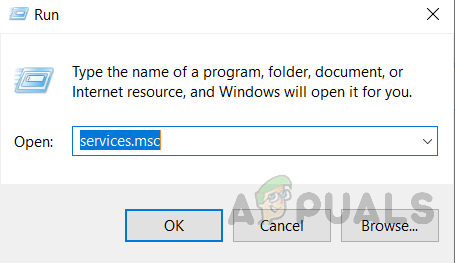
Accessing the Services screen - Once you’re inside the Services screen, move over to the right-hand tab of the screen, scroll down through the list of services and locate the Windows Installer service. When you find it, right-click on it and choose Properties from the context menu that just appeared.
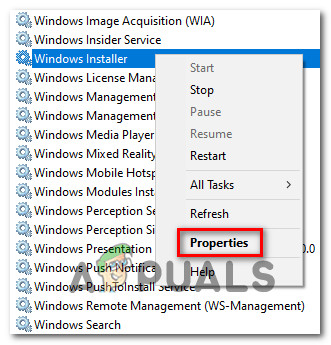
Accessing the Properties screen of Windows Update - Once you are inside the Properties screen of the Windows Installer services, access the General tab, click on the Start button to force-start the service.
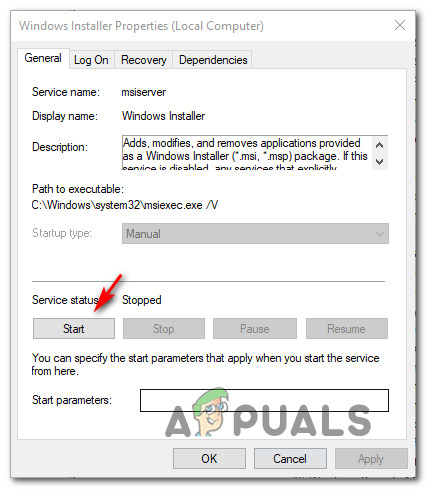
Starting the Windows Installer service Note: If you can, also change the Startup type to Automatic via the associated drop-down menu. However, depending on your administrator settings, this might not be possible.
- Restart your computer and wait for the next startup to complete. Once your PC boots back up, attempt to reinstall the driver that was previously triggering the 0x800705b3 error and see if the issue is now fixed.
In case the same problem is still occurring, move down to the next potential fix below.
Method 4: Performing a Winsock Reset
In case the 0x800705b3 error is related to some kind of network inconsistency (TCP or IP related), you might see Windows Updates failing due to bad data that forces the Windows to abort the installation of new pending updates.
In this case, you should proceed by doing a complete Winsock reset procedure to fix the majority of the socket and temporary data-related issues that might cause this behavior.
Several affected users have confirmed that this method was the only thing that allowed them to finally fix the Windows Update issue and install pending updates normally.
Here are some step-by-step instructions that will walk you through the process of performing Winsock Reset:
- Open up a Run dialog box by pressing Windows key + R. Inside the text box, type ‘cmd’, then press Ctrl + Shift + Enter to open up an elevated Command Prompt.
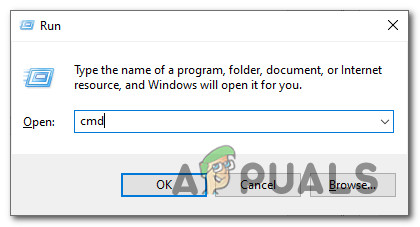
Accessing an elevated CMD prompt Note: When prompted by the UAC (User Account Control) prompt, click Yes to grant admin access.
- Inside the elevated CMD prompt, type and taste the following commands in order and press Enter after each one to effectively reset the TCP and IP data that might be responsible for the apparition of the 0x800705b3 error code:
nbtstat -R nbtstat -RR netsh int reset all netsh int ip reset netsh winsock reset
- Once every command above is processed successfully, you can go ahead and close the elevated Command Prompt and reboot your computer.
- After the next startup is complete, repeat the installation of the Windows Update that was previously failing and see if the issue is now fixed.
In case the same problem is still occurring, move down to the next potential fix below.
Method 5: Performing SFC and DISM Scans
If none of the ‘superficial’ causes have worked in your case, you should start considering some type of system corruption that might affect your computer’s ability to complete pending updates that are currently waiting to be installed.
In case you find yourself in this particular scenario, you should run a couple of built-in utilities capable of fixing corrupted instances that might be currently affecting the Windows Update component.
Our recommendation is to start with a simple System File Checker scan. An SFC scan will cross-check every Windows File against a local archive that maintains healthy copies. In case corrupted instances are found, this utility will swap the corrupted instance with the healthy equivalent.
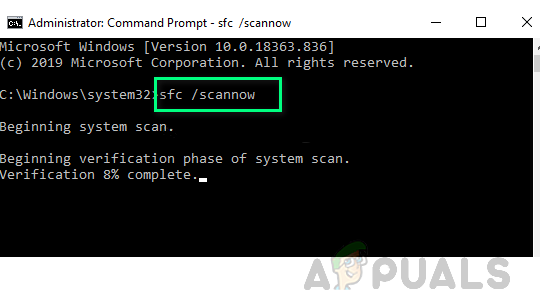
Once the SFC scan is complete, reboot your computer and wait for the next startup to complete.
After your computer boots back up, initiate a DISM scan. This utility works differently in the sense that it relies on a sub-component of Windows Update to download healthy copies for the corrupted Windows files that need to be replaced. Because of this, it’s important to make sure that you have a reliable Internet connection before initiating this operation.
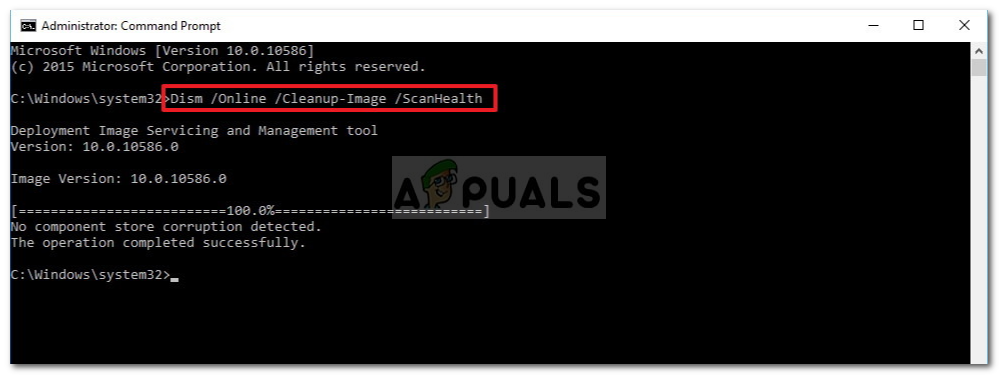
After the DISM scan is complete, reboot your computer one final time and see if the issue is fixed once the next startup is complete.
In case you are still dealing with the same 0x800705b3 error code, move down to the next potential fix below.
Method 6: Resetting every Windows Component
In case none of the methods above have worked for you, chances are your system is currently dealing with some type of system file corruption that cannot be resolved conventionally or with the built-in utilities included with your Windows installation.
If you’ve reached this point with no resolution, the only viable fix at this point is to go for a procedure that will effectively reset every Windows component completely with a procedure like clean installing or repair installing (in-place repairs).
Depending on your particular scenario, you might want to choose one over the other.
For example, if you’re currently holding important information on the OS drive, you should really consider going for a repair install. Sure, this procedure is a little tedious, but the main advantage is that you get to keep all your personal files, applications, and personal media that you’re currently storing on the Windows drive. The main drawback of this method is that you will likely need a compatible installation media in order to start this process.
On the other hand, if you have already backed up your data and you are not afraid of wiping your OS drive, a clean install should be your preferred approach. This method is way fast and you can start it directly from the installation GUI menu of your Windows installation without inserting or plugging in a compatible installation media.





